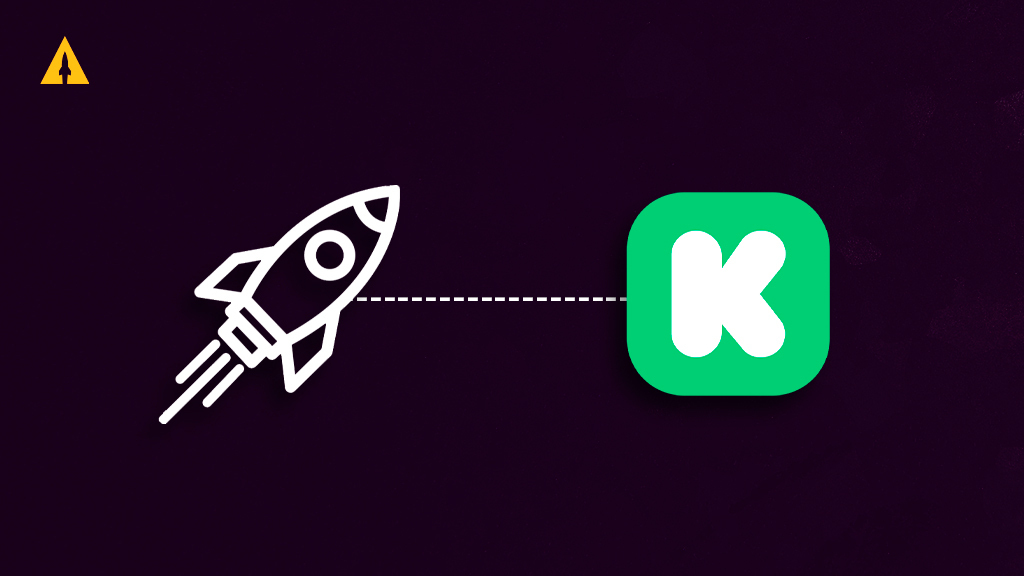
Though it seems like a small thing, deciding when you should launch your campaign is crucial to maximizing your raise. While it’s not the be-all and end-all of determining the success of your crowdfunding campaign, it can negatively impact your results if done incorrectly.
People often ask us what the best time to launch a Kickstarter campaign is or how long a campaign should last, but they don’t ask why. Creators might have a general sense of the best month, day, and time they want to launch, but we’ve analyzed a lot of data to support what we think is objectively the best time to start a campaign.
This data-driven approach involves analyzing two key metrics as they relate to launches by month, day, and time of day.
- Number of campaigns launched
- Average backers per project
By looking at the data from 342,287 Kickstarter projects, we could accurately project the likelihood that someone would back a project depending on the time frame. This article will be a key resource in understanding the results of this data and how it affects the best time to launch a Kickstarter or Indiegogo campaign.
Key takeaways
- Analyzing data to determine the best crowdfunding campaign timing
- Using seasonal- and product-specific indicators to inform Kickstarter campaign preparation
- Understanding what makes certain times, days, and months good or bad for launch
Contents
- The days-of-the-week dilemma
- The soft launch strategy for Kickstarter and Indiegogo
- Timing is everything — why the hour of launch matters
- Seasonal sensibilities — picking the right month
- The power of Meta ads and email marketing
- Tailoring your strategy to your project category
- Planning your launch in 2024 and beyond
- Final thoughts on the best time to launch a Kickstarter
The days-of-the-week dilemma
Let’s look at the data and what it says about the most optimal days of the week to launch a crowdfunding campaign. First, a primer on how to read the data charts:
- The purple bars represent the number of projects launched
- The golden icons represent the amount of backers who bought in the given time frame
By looking at these two data sets atop one another, a clear picture gets painted on what the best time is to launch a campaign. Here’s the data broken down by days:
Why Mondays are a no-go
One of the most common misconceptions about the best day of the week to launch is choosing to start on a Monday. As the data shows, it is the second most popular day of the week to launch in terms of volume, but it is only the third most effective in backer engagement.
So why does this happen?
Monday is the start of most people’s work week. You may think people would get a boost in morale from seeing a freshly launched campaign in their email inbox, but generally, people are just trying to get back into work mode. Whether it’s upcoming deadlines or catching up on stuff missed over the weekend, Monday usually gets lower engagement in crowdfunding.
For this reason, we usually recommend against launching at the start of the week.
The power of midweek launches
Launches in the middle of the week, however, have shown surprisingly strong results. Just by glancing at the data, Tuesday is the clear winner in both number of launches and total number of backers. By Tuesday, it’s clear that people have started to settle into their work week. This decrease in immediate work demand makes them more likely to dedicate some time in their day to back a project.
Wednesdays are also worth commencing a launch, as the data shows that the average backer return compared to the number of projects launched is second best. Many people need a reason to look forward to “hump day,” and tuning into a crowdfunding launch for a product they’re interested in could be that reason.
If one thing is certain — according to the data — it’s that you should never launch on the weekend. This is the time when people are too engaged in their personal lives to make time to sit at the computer and log in to Kickstarter or Indiegogo. Not only that, people are more likely to spend money on the weekends, so they might feel less inclined to want to pledge to your product.
The soft launch strategy for Kickstarter and Indiegogo
Soft launches are another option to consider when thinking about the days of the week to launch a campaign. These launches will let your campaign go live, but the idea is to only promote it to your closest network or supporters, such as family, friends, and coworkers.
In theory, this negates the worry of launching on a weekend or Monday since all of your traffic will only be coming from people you know. From there, your campaign would run for 24 to 48 hours, and come Tuesday or Wednesday — if you’ve hit a decent percentage of your goal from your soft launch — there’s a chance you can get organic traffic from your crowdfunding platform when people view the home page.
At LaunchBoom, though, we don’t typically recommend this type of soft launch, because there’s no guarantee that you’ll hit your funding goal with it. It’s essential to hit this milestone on day one of your campaign since crowdfunding platform rankings are largely driven by popularity. It’s too risky to bank on your personal network of family and friends to make that happen.
Instead of only bringing your personal contacts in on day one, send the launch email to your pre-launch list, post that your campaign is going live all over social media, and tell all your friends and family at the same time. This greatly increases the likelihood that you’ll reach your funding goal on day one.
So what makes this type of day one launch so successful? It all has to do with understanding backer psychology and leveraging their tendencies.
Understanding and leveraging audience behavior
Backers love to hop on what’s currently popular in crowdfunding. When you get a sudden burst of funding in a short period of time — one of the main soft launch benefits — your platform deems you popular and gives your campaign an organic boost in Kickstarter audience engagement.
Kickstarter has featured placements on their website that can drive a lot of traffic to your campaign page. Their home page banner is one of the most desirable places to be featured, and they also have featured placement for each of the category pages for getting your project to eyes who might be interested.
Indiegogo also has a few featured placement options that can drive early traffic to your campaign, the most effective being placement on the rotating banner on their home page. There are two ways to get onto this banner:
- Sponsored placement: This involves paying Indiegogo to become a “GOGOPICK.” You can reach out to their team for details.
- Having a popular project: When your project proves to be popular, like when you have a successful soft launch, they deem it in their best interest to add you to their banner.
Leveraging backer psychology is a great way to transition your soft launch to a hard launch, which lets you ride a wave of momentum that can carry you through your first week of your campaign.
If you don’t elect to have a soft launch though, you’ll need to fine-tune your launch time down to the hour. This ensures you can have the most effective first day possible.
Timing is everything — why the hour of launch matters
Now that you know which days of the week are ideal for launching, it’s time to explore the question: what is the best time of the day to launch a Kickstarter or Indiegogo campaign?
If you thought that the simple act of launching on a Tuesday or Wednesday would automatically net you the best results, you’d be incorrect. The time at which you launch matters just as much for achieving the best results.
Let’s start by looking at some hard data. The chart below reflects Eastern Standard Time (EST):

Customizing launch time based on audience insights
The first thing that stands out about this data set is the discrepancy between the best-perceived launch hour and the time when the average backers are most active.
The spike in launches clearly happens starting around 11AM EST, and it stays relatively the same until the early evening hours. Of course, we have to take into account the multiple time zones in the United States; EST being the earliest might lead people to believe they need to account for those living in Pacific Standard Time (PST), which is three hours behind.
Interestingly, the data shows that these concerns are unnecessary. Across the 24-hour window represented in the chart, the average number of backers is mostly concentrated within the middle of the first half of the day, regardless of time zone.
This objective data is crucial in allowing backers to customize their launch time based on real numbers, and it allows them to find the sweet spot that works best for them.
The golden hours for launching
That being said, the data does suggest a golden zone for launching a crowdfunding campaign. From 5AM to 9AM EST, we see the highest backer activity. Before and after that window, the numbers are less impactful.
Most people clearly think that the best time to launch is noon EST, or 9 AM PST; however, those that do are leaving considerable backer money on the table. It might seem like the right thing to do because it lines up with when west coasters are getting to work and east coasters are going on lunch break, but the data disagrees.
Earlier launches in this golden window are best because it gives the U.S. market (which is the biggest market for crowdfunding) time to get in on your massive day-one sales. Also, earlier launches increase your chances of getting on the “new and noteworthy” lists on crowdfunding platforms. This can give you an organic boost in visibility to others who visit the site to see what campaigns are new.
Seasonal sensibilities — picking the right month
Now that we have a sense of the best day of the week and the best time of day, it’s time to explore what the data says about the best month to launch on Kickstarter or Indiegogo. As before, we will be analyzing a graph highlighting the total amount of projects launched versus how many people backed projects.
The best and worst months for launching on Kickstarter and Indiegogo

First, let’s look at the worst months to launch your Kickstarter or Indiegogo campaign. As the data illustrates, December is the clear loser. Not only is the amount of projects being launched at their annual low, but backer engagement is almost half what it normally is.
Primarily because of the holidays, you want to shy away from going live at the end of the year. People are spending money on other things during this time.
As to the best month to launch a product, there’s a little more room for interpretation. There are a couple of key data points that stand out.
- March is the most popular month to launch a campaign
- May gets the most backers per project out of all months of the year
If your goal is to cast your net when backers are most active, then you can launch your campaign in May. However, we’ve seen over the years that May is only better by a small margin compared to the other months besides December. There are other things to take into consideration that can influence the best month to launch your product, such as season alignment.
Project and season alignment
Something that works well from a marketing perspective is launching on crowdfunding during the season that is most appropriate for your product. It may sound counterintuitive, but you don’t want to launch prior to your most suitable season in hopes that backers will receive their product just in time for when that season rolls around.
People buy products based on the needs they have when they see a campaign, even if the product won’t arrive until much later. Crowdfunding backers have a built-in understanding that it will take time to receive their products anyway, so it’s more effective to appeal to a product’s seasonality in the appropriate months.
Seasonal Case Study: Gosun Chillest
Let’s look at the GoSun Chillest cooler as an example, which raised $938,078 on Indiegogo.
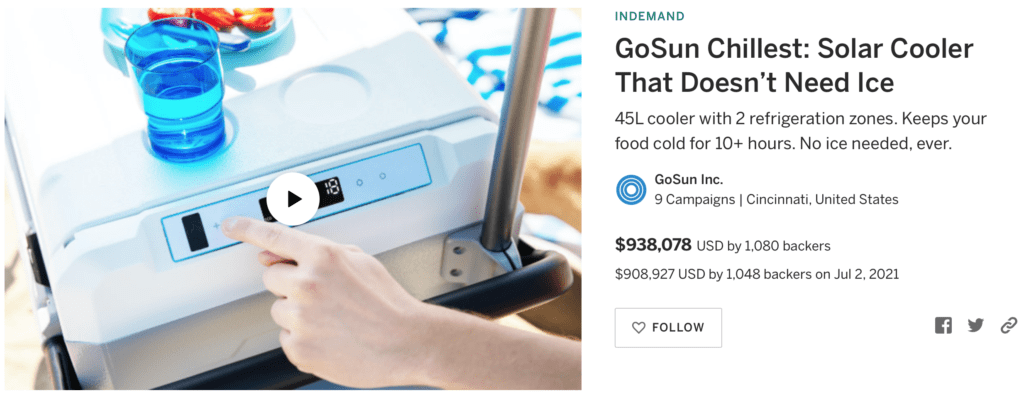
The GoSun Chillest is an outdoor cooler that converts solar power into energy for its internal cooling mechanism. When might someone get the best use out of a product like this? If you guessed summer, the creators thought so too. As a result of the natural association with days at the beach or picnics at the park, early summer was selected as the best time to launch their campaign.
Thanks to a strong start to their summer launch, they were able to net even more gains from Indiegogo’s platform promotions. Here’s a breakdown of the money they raised per Indiegogo placement:
- Email newsletters: $81,076
- Home page placement: $47,181
- High placement in the category listing: $53,313
A total of $181,570 of additional funding was earned by catching the attention of backers who happened to see the campaign being promoted by the platform. Coupled with the fact that it was summertime and people might have made their decision based on seasonal relevance, this is a good demonstration of how to have a “LaunchBoom” if you’re planning to launch your season-specific product in the right month.
If you have a product that can accomplish a similar effect, it’s beneficial to launch in that time frame — even if you believe the data says only to launch in March. The only rule to always follow according to the data is to avoid launching in December.
The power of Meta ads and email marketing
As we preach here at LaunchBoom, a strong advertising and email marketing strategy in every phase of a crowdfunding campaign is where success is made. A combination of advertising on Meta platforms and strategic email marketing are the bread and butter for creators, which can lead to some staggering funding when done at the optimal Kickstarter launch time.
Here’s what a reservation funnel should look like when combining these two major crowdfunding marketing tools:
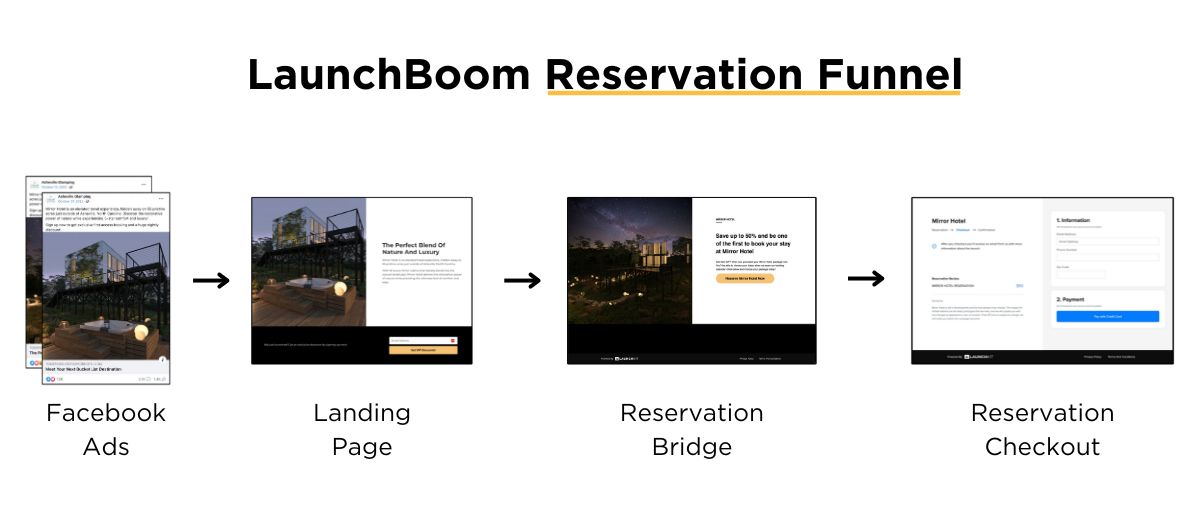
xr:d:DAFmUCVfVp4:7,j:4001842243516822928,t:23062001
Cold leads are typically brought in through well-crafted Meta ads, they give their email address to express their interest in the upcoming campaign, then you get them to convert with a reservation for special access when the campaign goes live.
Using the same example of the GoSun Chillest campaign, we can see how the timing of their launch impacted their advertising. With warm sunny months being a key part of this product’s unique value proposition, we were able to lean into that with their marketing. Let’s look at their best-performing ad.
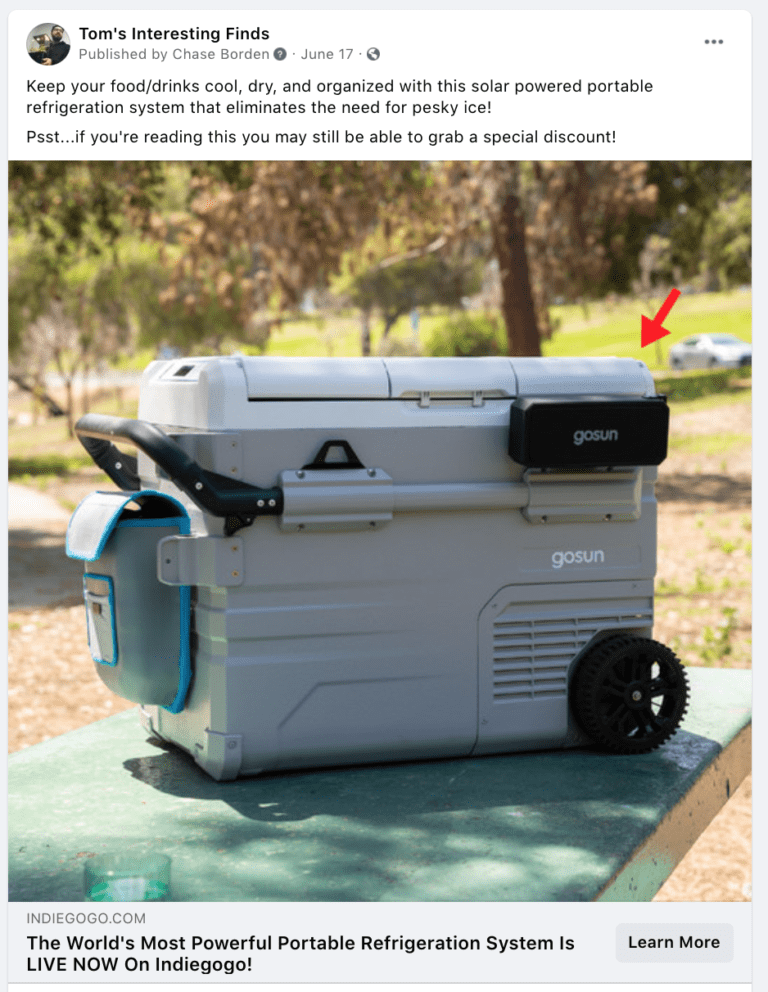
Using the image of the cooler on a park bench coupled with copy like “cool” and “ice” evoked the feeling of the summer months for viewers. The numbers help make the case for why running this ad was so effective during a summer launch. Here’s a look at the metrics for this ad, which drove interest during pre-launch and major revenue throughout the duration of the campaign:
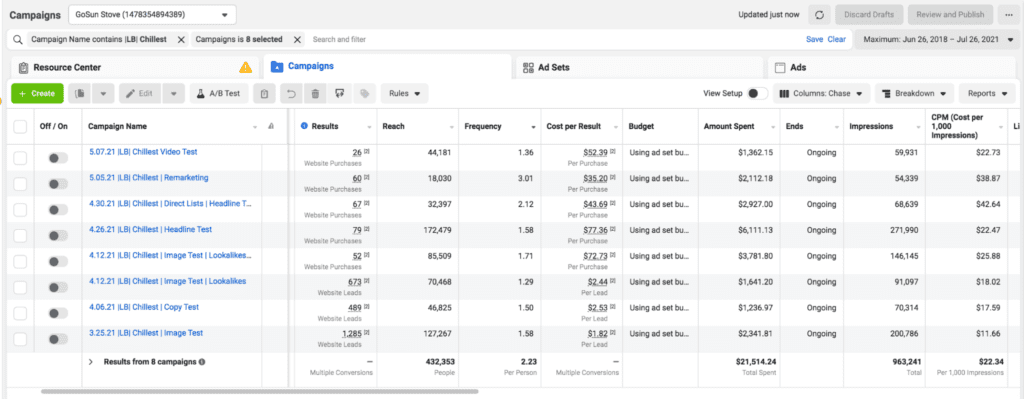
Notable pre-campaign metrics above include:
- Ad spend: $21,514.24
- Leads: 5,106
- Cost per lead: $4.21
- Reservations: 348
- Cost per reservation: $61.82
$61.82 might look like a high cost per reservation, but it should be noted that the lowest backer price was $579. That is an excellent return on ad spend.
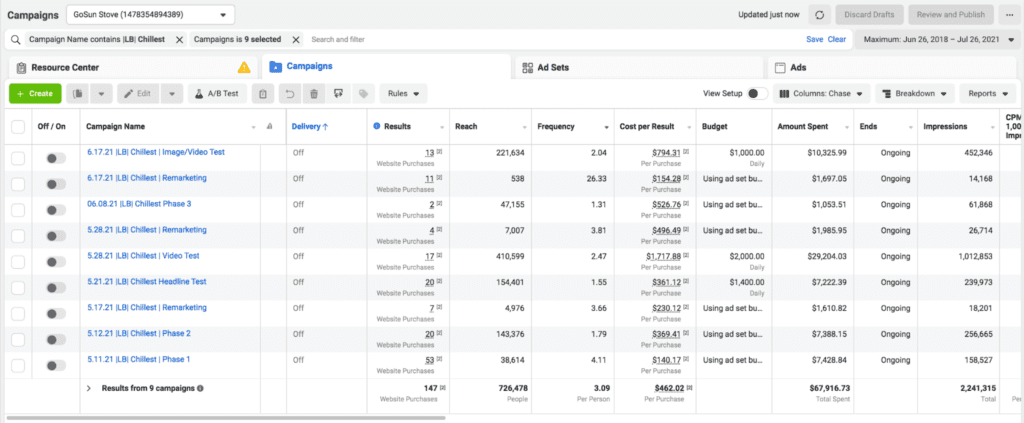
These metrics above demonstrate the efficacy of boosted ad spend and email marketing mid-campaign:
- Ad spend: $67,916.73
- Revenue: $527,928.00
- Return on ad spend: 8.25x
With even more money being poured into the Meta ad and email marketing strategy while live, the momentum built up early in the campaign was able to double. These tools can act as the accelerator for a campaign, but the effectiveness of the ads in the context of the summer launch really demonstrate how knowing what the best time is to launch a Kickstarter or Indiegogo campaign can impact how successful you can be.
Tailoring your strategy to your project category
Kickstarter project category timing is another factor to take into consideration when determining a launch date. While there isn’t concrete data we can point to that proves the efficacy of launch dates by project category, there are some interesting correlations to be found that overlap with launch success based on seasons.
Category-specific launch days
Let’s break down some of the most common product categories we see in crowdfunding, and how timing a launch around specific events, seasons, or holidays might have a positive impact on campaign success.
Technology
Two things to consider in this product category are seasonality and industry events. If your tech product is useful in cold weather, choose a cold weather month to launch. If your product has no seasonal association, you could consider timing a launch around popular events in the tech industry, like CES in January.
Games
Game launches, or anything that aligns with geek and gamer culture, may also benefit with some industry event alignment. Fan and game conventions have become fairly widespread, so it might not hurt to time a launch around some of the big ones like San Diego Comic-Con.
Besides that, going live early enough in the year so that backers can receive their game by the holidays is another solid Kickstarter launch strategy for games. Some of the best times to bring out an interesting new board game are when giving it as a gift or having a large gathering during the holidays.
Fitness and Outdoors
This product category is one where you’ll see more seasonal impact on the crowdfunding campaign. Launching a revolutionary new pair of snow pants in August wouldn’t make much sense for example.
That being said, many fitness and outdoor products are most useful in the warmer months. Stick to launching in the window of March to May, unless your product is winter-specific.
Food and Cooking
There is no one-size-fits-all answer for the broad category of food and cooking since this is something people can do year-round. However, if you want your marketing to lean heavily on outdoor cooking and grilling, it’s best to launch somewhere between May and August, or around a holiday that’s closely associated with outdoor cooking.
Pets
Pets are another product category that fits the year-round classification. As with always, just try to avoid the worst month of the year to launch, as many pet-owning crowdfunders will be dormant due to the end-of-year holidays.
Planning your launch in 2024 and beyond
So in the end, what is the best time to launch a Kickstarter or Indiegogo campaign? Factoring in all of the data and strategies illustrated in this article, if you’re planning your launch in 2024 and beyond, it’s tempting to say 8AM EST on a Tuesday in May is the safest bet.
While the data makes the case for this claim, we feel the time of day and day of the week will have the biggest impact on your launch. The biggest takeaway is to launch your product in the middle of the week, within the golden window of 5AM to 9AM EST.
Don’t be tempted to rush a launch to hit a date you aren’t ready for. There are plenty of cases where creators went live before they should have only to end up negatively impacting their success by doing so.
Final thoughts on the best time to launch a Kickstarter
While choosing the time and date for a launch are important, it’s ultimately more pertinent to make sure you’re properly prepared to maximize a live campaign. How long your pre-launch takes is determined by so many factors, and rushing this essential step of the crowdfunding process to launch a month or two before you’re ready can cost you precious crowdfunding dollars.
If you have an idea about when you want to launch but want to make sure you understand how to be as ready as can be, click on the “talk to an expert” button at the bottom of this page. There, you can set up a meeting with one of our crowdfunding experts who will be happy to assist you in your product launch — no matter what stage you’re in.




